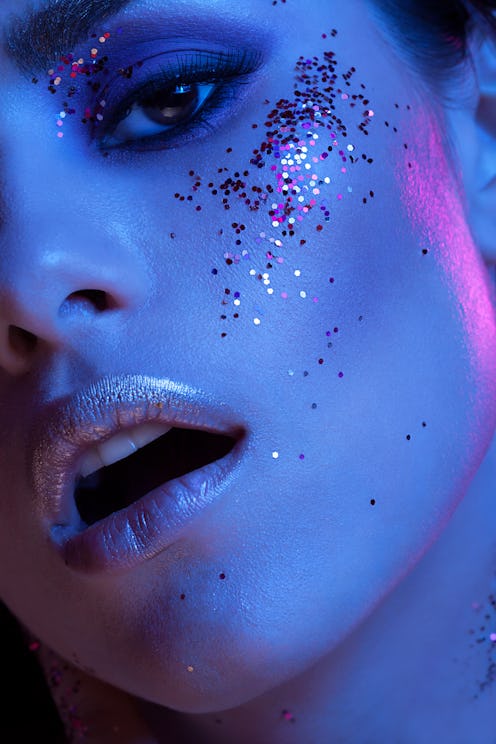Life
These Scientists Want To Ban Glitter — For A Pretty Good Reason
Glitter is pretty much inescapable this time of year. It's on holiday ornaments. It's in lipstick. It’s on pretty much everything you'll consider wearing on New Year's Eve. You can even send your enemies an envelope full of glitter, if you're a particularly evil person. But turns out that all that glitters is not good for the environment, and some scientists are wanting to ban glitter all together.
Glitter is impossible to clean up and it somehow gets places you never put it, but does that really warrant an all-out ban? Scientists in the United Kingdom believe so. Most glitter is made up of tiny bits of colored, shiny plastic called microplastics, and microplastics are really, really bad for the environment, especially for the ocean and aquatic life.
UK scientists already have plans to implement a ban on microbeads, a type of microplastic commonly found in face washes and body scrubs, and they’re known to be hazardous to the environment as well. (The U.S. passed a law banning microbeads in 2015, which was implemented in July 2017.) Because both microplastics (the little beads in face washes and glitter) are known to cause environmental harm, some scientists believe it makes sense for both to be banned.
"I was quite concerned when somebody bought my daughters some shower gel that had glitter particles in it," Richard Thompson, a professor at Plymouth University who led a study examining how plastics affected marine environments, told CNN. "That stuff is going to escape down the plughole and potentially enter the environment," he said. The study Thompson led found that 33 percent of fish caught in the United Kingdom had plastic in them.
Glitter can potentially release chemicals into the water and hurt marine life if they accidentally swallow the glitter. What is bad for the animals in the ocean will eventually impact humans directly because many people eat seafood.
“When it [glitter] goes down the drain, it breaks down into even smaller pieces of plastic. Then it goes into our waterways, and our oceans are getting this tiny, tiny coating of plastic that’s insulating it. [Glitter] gets digested by micro-organisms, by fish, all of it. And that becomes our food, that becomes our water,” Saba Gray, founder and CEO of BioGlitz, a biodegradable glitter brand, told Racked in August.
So traditional glitter is harmful and may be banned soon, but all is not lost. There are several environmentally friendly glitter alternatives. BioGlitz prides itself on being equal parts glitzy and safe for the environment. “BioGlitz unique biodegradable formula connects us all through shine, consideration, and respect for nature. We believe environmental consciousness drives self-decor!” the BioGlitz website reads.
Biodegradable glitter and traditional glitter differ by how it decomposes, not by how it looks. "Plastic glitter will take hundreds of years to decompose, and most glitter, because of its size will end up in the ocean and in fish. [...] But with [eco]glitter little micro-organisms found in places like soil and in the ocean will eat it over a period of months and that's how it breaks down," Sophie Awdry, co-founder and director of Eco Glitter Fun, told BBC.
So the upshot is that even though traditional plastic glitter is doing damage to the environment, there are alternatives that still give the same effect without further facilitating environmental degradation. There’s no need to run out to your local crafts store and stock up on shiny, emerald-colored microplastic. Whether you use glitter to make homemade crafts, get in the festival spirit, rip the runway, or exact revenge on your enemies, you can choose a biodegradable alternative. It won’t harm aquatic creatures, and it looks just as good.
